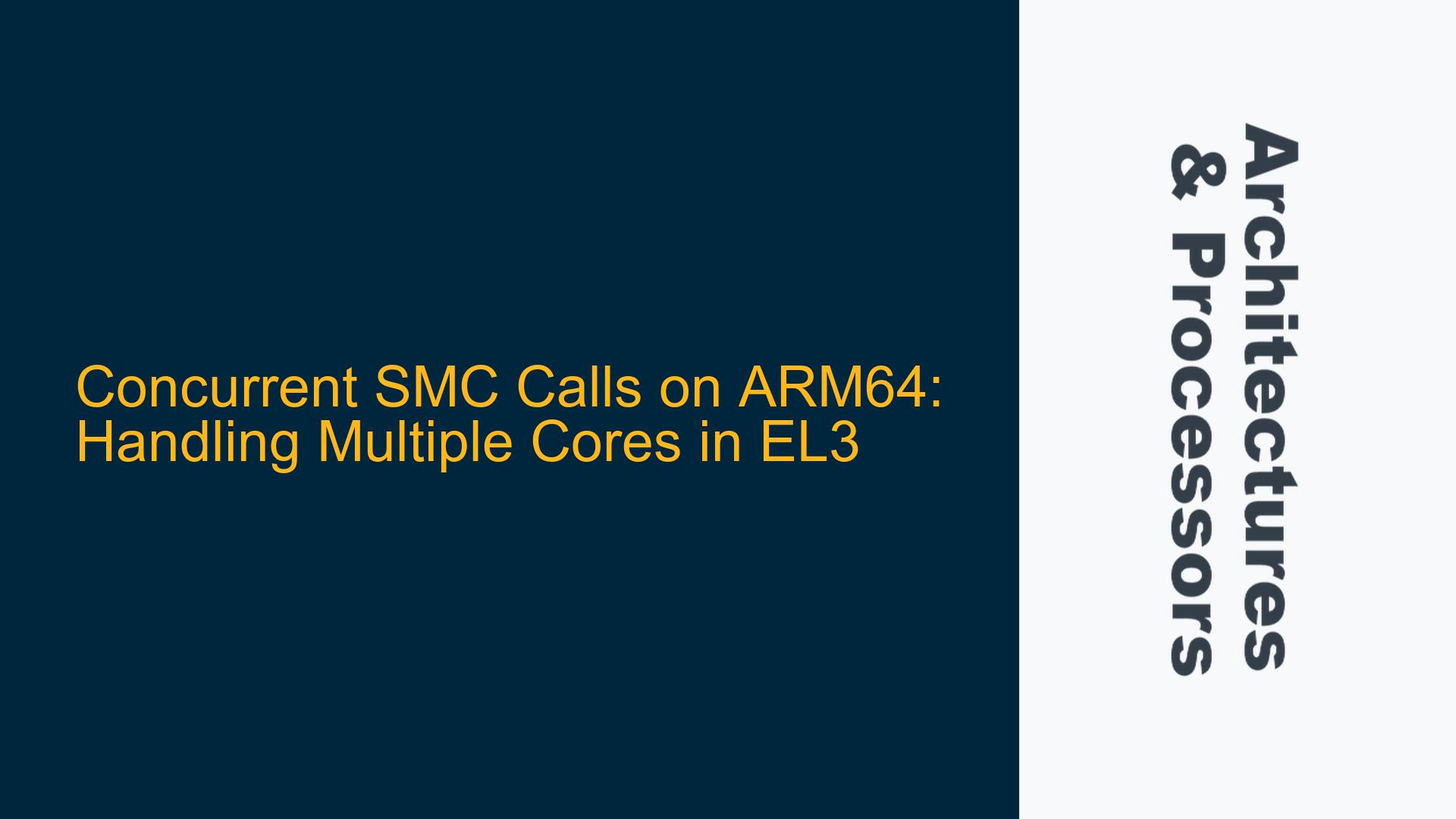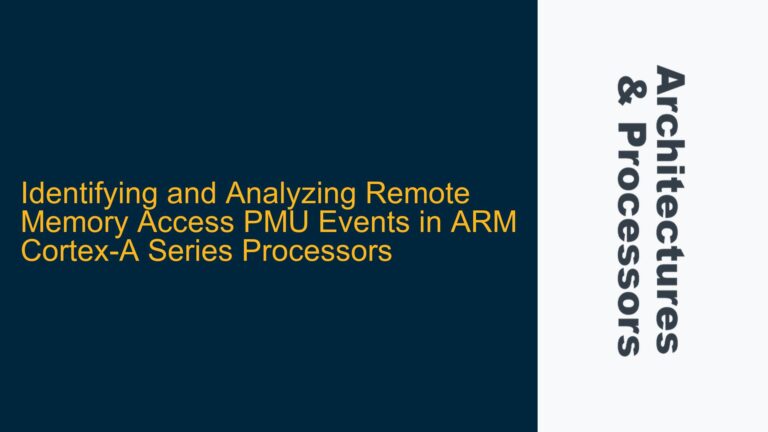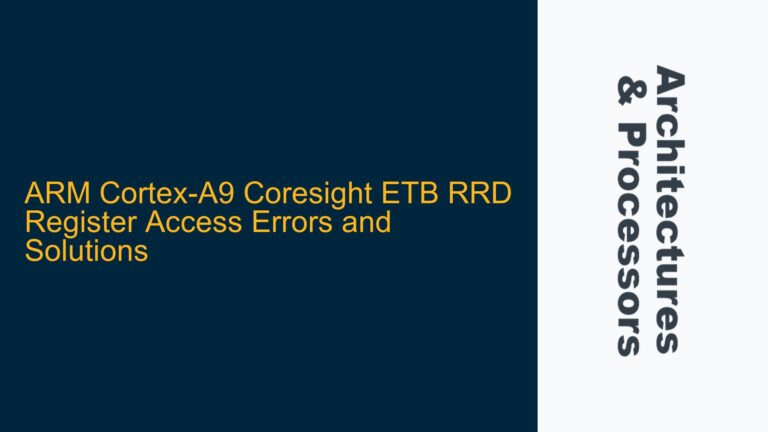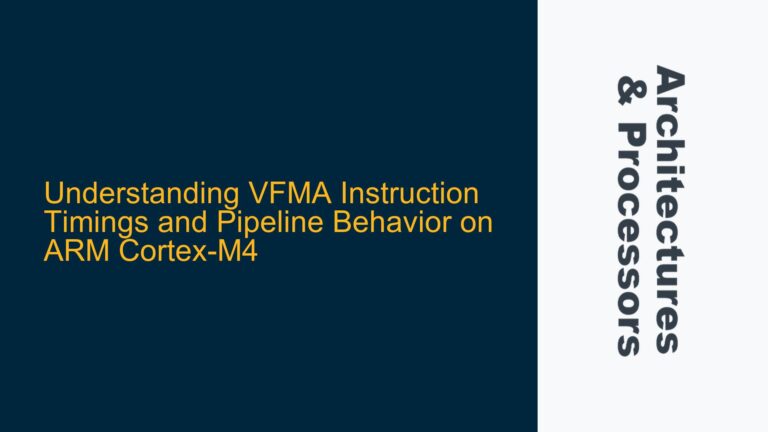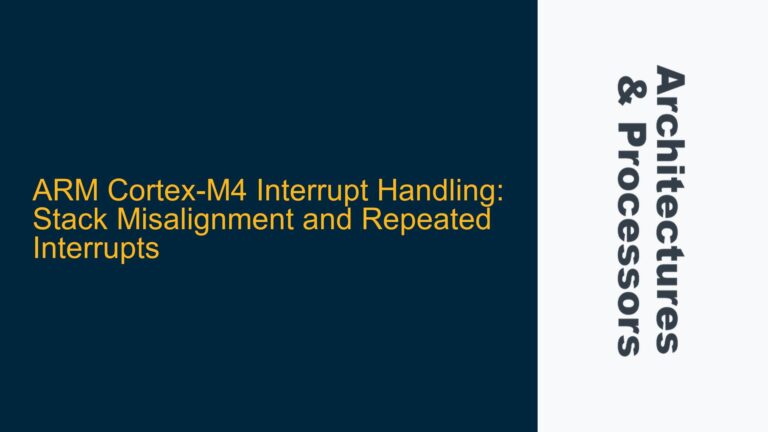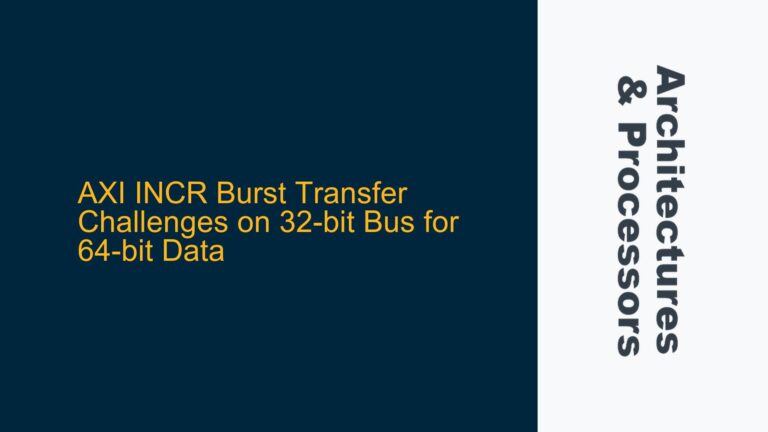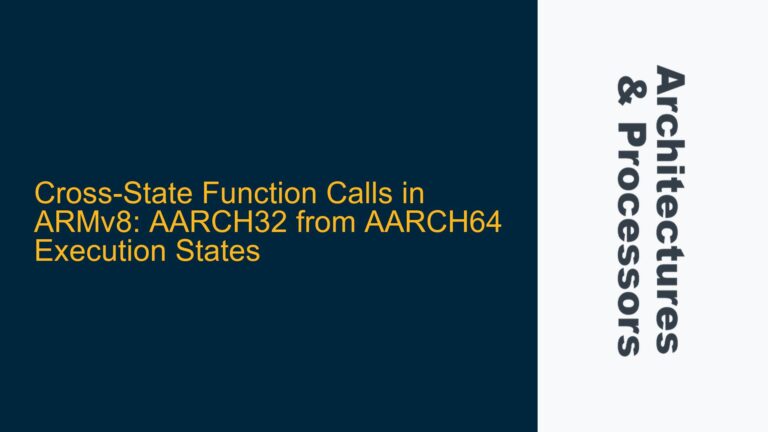ARM64 SMC Call Concurrency and EL3 Entry Mechanisms
The ARM64 architecture introduces a robust mechanism for handling Secure Monitor Calls (SMC), which are essential for transitioning between different exception levels, particularly into EL3, the highest privilege level. SMC calls are synchronous exceptions triggered by software to request services from the Secure Monitor, which operates in EL3. A critical question arises when dealing with multi-core systems: Can multiple cores concurrently execute SMC calls and enter EL3? This scenario is not only plausible but also common in modern multi-core ARM64 systems. However, it introduces complexities related to concurrency, resource sharing, and synchronization within the Secure Monitor.
When Core-0 initiates an SMC call, the processor transitions to EL3, where the Secure Monitor handles the request. If Core-1 simultaneously initiates another SMC call, it too will transition to EL3. Since each core operates independently, both cores can theoretically execute their respective SMC handlers concurrently. However, this concurrency raises questions about the integrity of shared resources, such as memory-mapped registers, secure world data structures, and hardware resources that the Secure Monitor manages. The ARM architecture does not inherently restrict multiple cores from entering EL3 simultaneously, but the implementation of the Secure Monitor must account for this possibility to avoid race conditions and ensure system stability.
The Vector Base Address Register (VBAR) plays a pivotal role in this context. Each core has its own VBAR, which points to the exception vector table for that core. When an SMC call is made, the core uses its VBAR to locate the SMC handler in the exception vector table. Since each core has its own VBAR, the SMC handlers for different cores are effectively isolated, allowing concurrent execution. However, this isolation does not extend to shared resources, which must be carefully managed to prevent conflicts.
Core Independence and Shared Resource Contention in EL3
The primary cause of potential issues during concurrent SMC calls lies in the shared resources accessed by the Secure Monitor. While each core operates independently and has its own exception vector table, the Secure Monitor often needs to access shared resources, such as secure memory regions, hardware peripherals, and system registers. If multiple cores attempt to modify these shared resources simultaneously, race conditions can occur, leading to unpredictable behavior.
For example, consider a scenario where Core-0 and Core-1 both execute SMC calls that modify a shared secure memory region. If the Secure Monitor does not implement proper synchronization mechanisms, such as locks or semaphores, the modifications made by one core might be overwritten by the other, leading to data corruption. Similarly, if the Secure Monitor accesses hardware peripherals without proper synchronization, it might cause hardware conflicts or incorrect peripheral behavior.
Another potential cause of issues is the lack of proper exception handling within the Secure Monitor. If an SMC handler on one core encounters an error and fails to clean up properly, it might leave shared resources in an inconsistent state, affecting the execution of SMC handlers on other cores. This underscores the importance of robust error handling and resource management within the Secure Monitor.
Additionally, the timing of cache operations can also contribute to issues during concurrent SMC calls. If the Secure Monitor performs cache operations, such as invalidations or clean operations, without proper synchronization, it might lead to cache coherency problems. For instance, if Core-0 invalidates a cache line while Core-1 is still using it, Core-1 might operate on stale data, leading to incorrect results.
Implementing Synchronization and Resource Management in the Secure Monitor
To address the challenges posed by concurrent SMC calls, the Secure Monitor must implement robust synchronization and resource management mechanisms. One of the most effective approaches is to use locks or semaphores to protect shared resources. When an SMC handler needs to access a shared resource, it should acquire a lock before performing any operations and release the lock once the operations are complete. This ensures that only one core can modify the shared resource at a time, preventing race conditions.
For example, consider a shared secure memory region that multiple SMC handlers need to access. The Secure Monitor can implement a spinlock or a mutex to protect this region. Before accessing the memory region, the SMC handler acquires the lock. If another core attempts to acquire the lock while it is held, it will spin or wait until the lock is released. This ensures that only one core can modify the memory region at a time, preventing data corruption.
In addition to locks, the Secure Monitor should implement proper exception handling to ensure that shared resources are always left in a consistent state, even if an error occurs. This includes cleaning up any acquired locks, releasing any allocated resources, and restoring any modified system registers to their original state. Robust exception handling is crucial for maintaining system stability and preventing cascading failures.
Cache management is another critical aspect of handling concurrent SMC calls. The Secure Monitor should ensure that cache operations are performed in a synchronized manner to maintain cache coherency. This can be achieved by using data synchronization barriers (DSB) and instruction synchronization barriers (ISB) to ensure that cache operations are completed before proceeding. Additionally, the Secure Monitor should invalidate or clean cache lines as needed to ensure that all cores operate on the most up-to-date data.
For example, if the Secure Monitor modifies a shared memory region, it should perform a cache clean operation to ensure that the modifications are written back to memory. Similarly, if the Secure Monitor reads from a shared memory region, it should perform a cache invalidate operation to ensure that it is not operating on stale data. Proper cache management is essential for maintaining data integrity and preventing cache coherency issues.
Finally, the Secure Monitor should be designed with scalability in mind. As the number of cores in ARM64 systems continues to grow, the Secure Monitor must be able to handle an increasing number of concurrent SMC calls without degrading performance. This can be achieved by minimizing contention for shared resources, optimizing the execution path of SMC handlers, and leveraging hardware features such as distributed locks or atomic operations.
In conclusion, concurrent SMC calls on ARM64 systems are a complex but manageable challenge. By implementing robust synchronization, resource management, and cache management mechanisms, the Secure Monitor can ensure that multiple cores can safely and efficiently execute SMC calls and enter EL3. This not only enhances system performance but also ensures the stability and reliability of the system as a whole.
